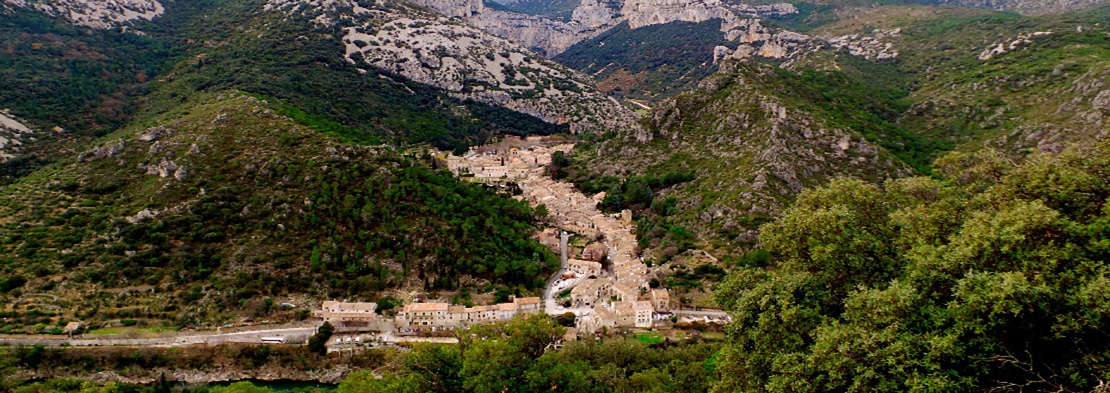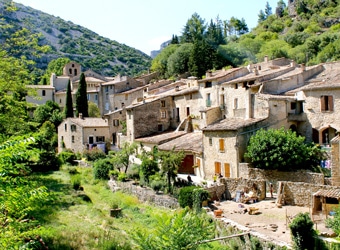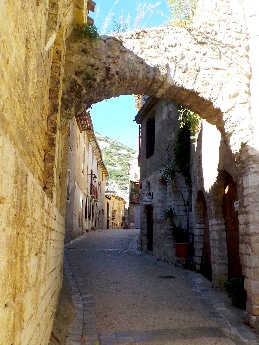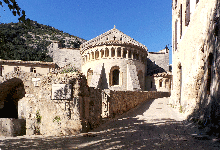
SAINT-GUILHEM-LE-DÉSERT
DISCOVER ONE OF THE MOST BEAUTIFUL VILLAGES IN FRANCE
We are located in Saint-Guilhem-le-Désert, which is an exceptional site that has been ranked among the most beautiful villages in France and registered as a World Heritage Site by UNESCO. With more than 800.000 visitors each year, this medieval village is a must see in the region Languedoc Roussillon.
St Guilhem
An inevitable place
If you go for a walk through the village, you will love the sight of the magnificent stone houses built along a little stream called the VERDUS. Thanks to this stream, numerous water fountains could be built all along the pretty paved alleyways. The biggest one can be found in the middle of the village square, right next to the splendid and elegant plane tree that has been here since 1855.
The Saint Sauveur de Gellone Abbey is also on the village square. It is a legendary stop-off for pilgrims of the St James' Way to Santiago de Compostela. Bearing witness to the grandeur of a bygone past, this abbey is a jewel of the beginnings of Romanesque art in the South of France. You will have the opportunity to discover numerous historical monuments: Pont du Diable, the Saint Sauveur de Gellone Abbey and its cloister…

You will be in the heart of the garigue (vegetation typical of southern France) to discover the Gorges of Hérault on your canoe, and then take your time to visit the picturesque village of Saint Guilhem le Désert. In order for you to do so, we are happy to offer you a free parking spot in our private parking lot (within the limit of available spots).Only at KAYAPUNA !
 SAINT GUILHEM LE DESERT'S HISTORY
SAINT GUILHEM LE DESERT'S HISTORY
Ater his last battle in Barcelona in 803, Charlemagne’s cousin decided to lay down the arms. He was looking for an isolated and deserted place, and found it thanks to his lifelong friend, Benoît d’Aniane.
This is how Guilhem, earl of Toulouse and Duke of Aquitaine, came to Saint Guilhem le Désert and gave some of his goods to the Gellone Abbey.
Thanks its extension, the first houses were built as well. Snuggling between the river and the mountains, their architecture resembles the architecture of the Abbey with their Romanesque vaults and the twin windows, separated by columns of stone.
A lot of craftsmen (coopers, turners) then settled down around the village square, which became the socio-economical center.
The remaining of the “giant’s castle” (Château du Géant) bears witness of the defensive system that had been set up to watch the roads that led to the village as well as the Hérault’s riversides.
The master architect who designed the Abbey also built a bridge to connect Aniane and Saint Guilhem le Désert in the 11th century. It is one of the oldest Romanesque bridges in France and it bears the name “Pont du Diable” (Devil’s Bridge) to this day. It is as well registered as World Heritage Site by UNESCO as part of the St James' Way to Santiago de Compostela.

 SAINT GUILHEM LE DESERT'S HISTORY
SAINT GUILHEM LE DESERT'S HISTORY
